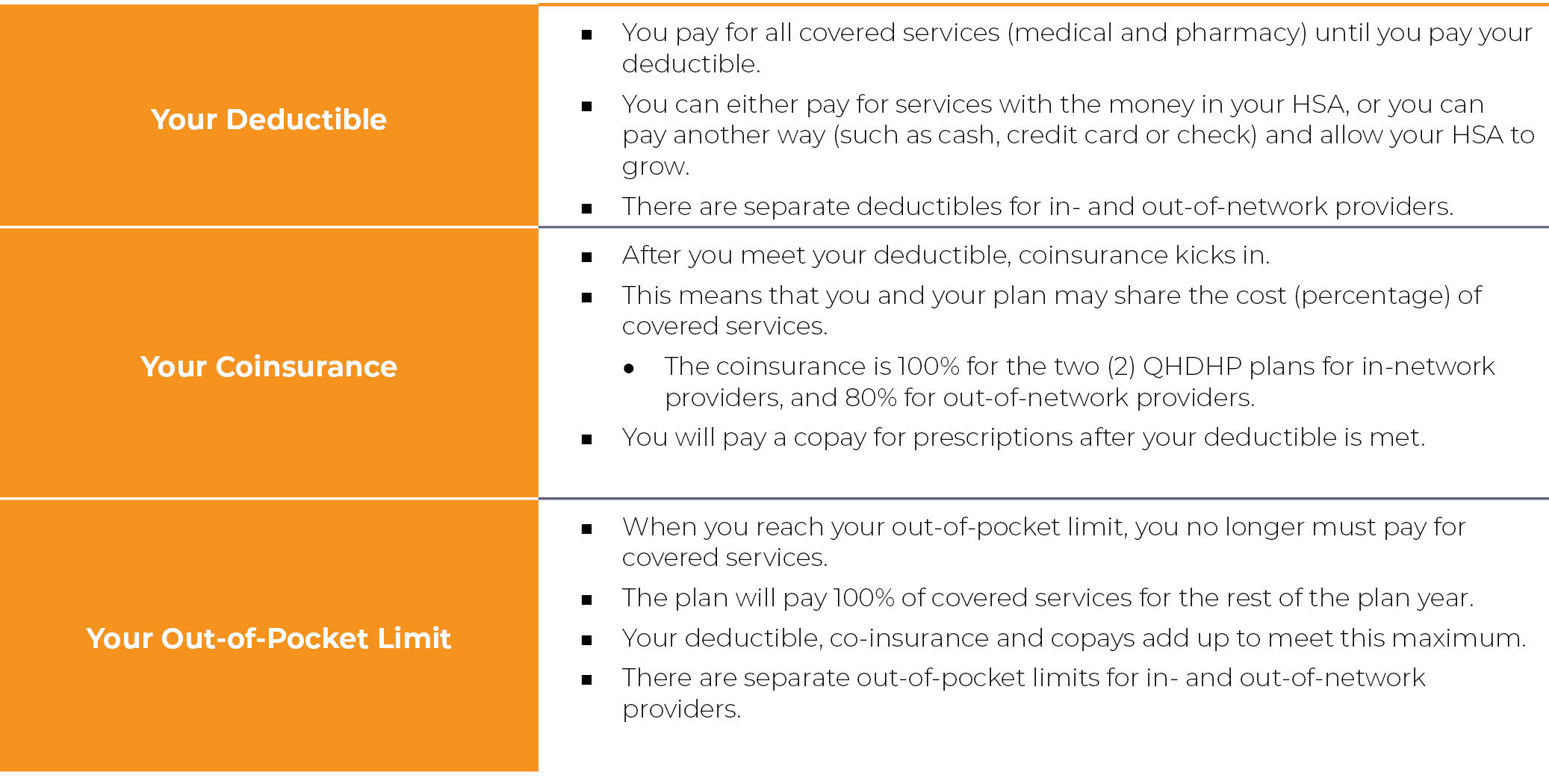Health Savings Account (HSA)
What is a Health Savings Account?
A Health Savings Account (HSA) is a pre-tax savings account attached to a Qualified High Deductible Health Plan (QHDHP). You can put pre-tax money aside for medical, dental, vision, and prescription expenses. The money in your HSA accrues interest and rolls over from year to year. In other words, there is no “use or lose” rule. The account is also in your name – you can take your HSA with you to a new job and even into retirement.
When a Qualified High Deductible Health Plan (QHDHP) is combined with an HSA, you can:
- Control healthcare expenses.
- Increase tax savings.
- Reduce insurance premiums.
- Enjoy flexibility and portability.
- Save for retirement.
Below is a quick overview of the advantages and disadvantages of an HSA.
Employee Eligibility
An HSA account can be opened under your name if you enroll in the Low HSA or HSA medical plan. You cannot open an HSA if you are enrolled in another medical plan that is not a QHDHP such as Medicare, TRICARE, etc. You can, however, open a Limited Purpose Flexible Spending Account (LPFSA).
Contributions
For 2024, an employee enrolled as an individual can contribute up to $4,150, and an employee enrolled as a family can contribute up to $8,300. In 2025, the limits will be $4,300 and $8,550, respectively. If the account holder is 55 or older by the end of the calendar year, they are eligible to contribute an additional $1,000 per year. You are able to increase, decrease, or stop contributions at any time by reaching out to HR@inserso.com.

